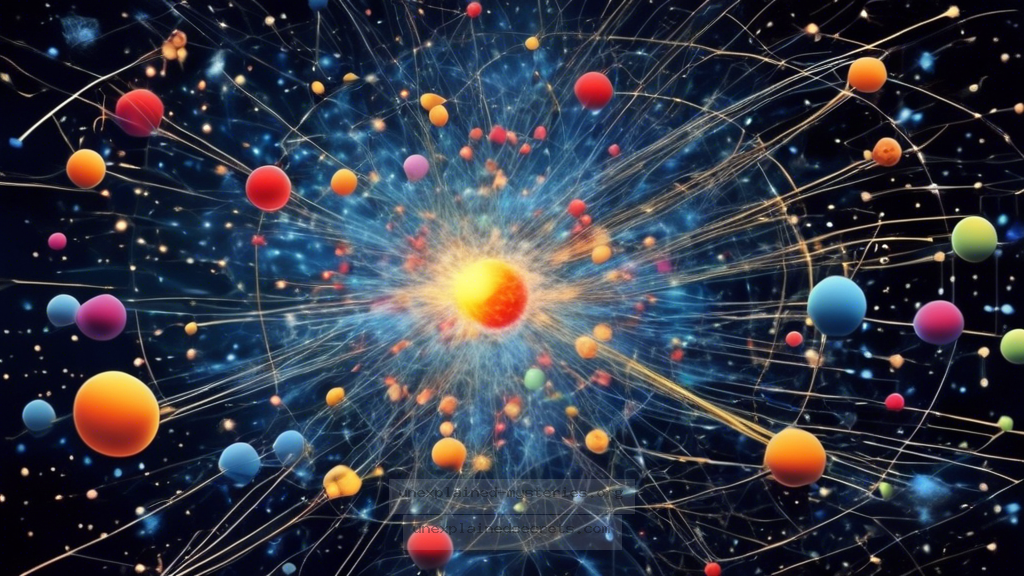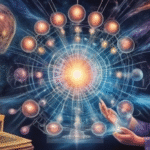What Lies Beyond the Standard Model of Particle Physics?
What Lies Beyond the Standard Model of Particle Physics?
The world of particle physics has long captivated scientists and enthusiasts alike, but what happens when the frameworks we rely on to understand the universe begin to show cracks? The Standard Model of particle physics has been the backbone of our understanding of fundamental particles and forces, yet it leaves many questions unanswered. This inquiry into the limitations of the Standard Model not only reveals scientific anomalies but also highlights the mysteries that continue to perplex physicists. In this post, we will delve into the unexplained phenomena associated with particle physics, exploring historical contexts, core concepts, and the implications of these anomalies.
Historical Context of the Standard Model
The Standard Model was developed throughout the 20th century, culminating in a framework that elegantly describes electromagnetic, weak, and strong interactions. Key discoveries such as the Higgs boson in 2012 at CERN’s Large Hadron Collider (LHC) reinforced confidence in this theoretical structure. However, even as researchers celebrated this milestone, the model was also criticized for its inability to account for gravity, dark matter, and dark energy—elements that constitute the majority of the universe’s mass-energy content.
Historically, scientists have grappled with the concept of unification of forces, dating back to the work of Albert Einstein. Despite the successes of the Standard Model, the quest for a Grand Unified Theory (GUT) remains elusive. The persistence of anomalies such as neutrino oscillations and dark matter interactions presents new challenges that encourage ongoing inquiry.
Core Concepts: What is the Standard Model Missing?
The Standard Model successfully categorizes particles into two groups: fermions (which make up matter) and bosons (which mediate forces). It describes 17 fundamental particles and incorporates three of the four known fundamental forces. However, several critical phenomena remain unexplained:
- Dark Matter: Comprising about 27% of the universe, its existence is inferred from gravitational effects but remains undetected by conventional means.
- Dark Energy: Infinitely more perplexing, it appears to be driving the accelerated expansion of the universe, yet its nature is completely unknown.
- Neutrino Mass: Neutrinos were long thought to be massless, but experiments such as Super-Kamiokande have confirmed they possess mass, contradicting the Standard Model.
Practical Implications of the Anomalies
The implications of these anomalies extend beyond the realm of theoretical physics. Understanding dark matter and dark energy could revolutionize our comprehension of the universe, leading to advances in technology and possibly even new forms of energy. Moreover, ongoing research into neutrino properties may open new avenues for particle physics, enhancing our understanding of the fundamental forces at play.
Current experiments, such as those conducted at the LHC, aim to probe these anomalies further. The search for supersymmetry (SUSY) and other theoretical extensions of the Standard Model may eventually provide the answers needed to close the gaps in our understanding.
Alternative Perspectives: Beyond the Standard Model
While the Standard Model serves as a robust framework, several alternative theories have emerged. One prominent approach is string theory, which posits that fundamental particles are actually tiny, vibrating strings. This theory suggests a higher-dimensional universe that could accommodate both gravity and quantum mechanics.
Another perspective comes from loop quantum gravity, which attempts to merge quantum mechanics and general relativity without requiring additional dimensions. Each of these alternative frameworks offers unique insights into the anomalies observed in particle physics, yet they also face significant challenges in terms of experimental validation.
Common Misconceptions About Anomalies
One common misconception is that anomalies imply a failure of the Standard Model; however, this is not entirely accurate. Anomalies can indicate areas where our understanding is incomplete, prompting further investigation rather than outright rejection of existing theories. For instance, many physicists view the existence of dark matter not as a flaw in the Standard Model, but as an invitation to expand our comprehension of the universe.
Best Practices for Investigating Scientific Anomalies
For scientists and researchers investigating these anomalies, several best practices can enhance the quality and efficacy of their work:
- Interdisciplinary Collaboration: Engage with experts from various fields such as cosmology, mathematics, and theoretical physics.
- Data Transparency: Ensure that experimental data is shared and accessible to foster collaborative exploration of anomalies.
- Hypothesis Testing: Develop and test multiple hypotheses related to observed anomalies to avoid bias.
Future Developments in Particle Physics Research
The field of particle physics is poised for exciting developments. Projects like the High-Luminosity LHC aim to collect more data and improve the precision of measurements related to the Higgs boson and other particles. Furthermore, future colliders, such as the proposed Future Circular Collider (FCC), could provide insights into the unexplained phenomena surrounding dark matter and neutrinos.
In addition to collider experiments, astrophysical observations from facilities like the Vera C. Rubin Observatory and gravitational wave detection by LIGO are expected to contribute significantly to our understanding of the universe’s structure and the nature of dark matter and energy.
Real-World Examples of Scientific Anomalies
Throughout history, there have been numerous documented cases of anomalies that challenge established scientific understanding:
- The Pioneer Anomaly: This refers to the unexpected trajectory of the Pioneer spacecraft, which indicated an unexplained force acting on them, leading to various hypotheses ranging from gravitational effects to potential new physics.
- The Muon g-2 Experiment: Recent results have suggested discrepancies between observed and predicted values of the muon’s magnetic moment, indicating that there may be new particles or forces at play.
Conclusion: The Ongoing Quest for Understanding
The mysteries that lie beyond the Standard Model of particle physics are not just intellectual curiosities; they represent fundamental questions about the nature of reality itself. As we continue to uncover new anomalies and explore alternative theories, we inch closer to a more complete understanding of the universe. The quest for answers in particle physics is ongoing, and with each new discovery, we redefine our place in the cosmos. Whether we uncover the secrets of dark matter, understand the true nature of neutrinos, or find a unifying theory that encompasses all forces, the journey promises to be as exhilarating as the discoveries themselves.
Other Articles
Recent Posts
- What Happened to Flight MH370? The Conspiracy Theories That Still Haunt Us
- What Secrets Lurk Within the Walls of the Infamous Trans-Allegheny Lunatic Asylum?
- What Evidence Supports the Existence of Bigfoot in the Pacific Northwest?
- What Happened to the Indus Valley Civilization? Unraveling the Mysteries of Ancient Urban Life
- Can Telepathy Be Scientifically Proven Through Laboratory Evidence?







